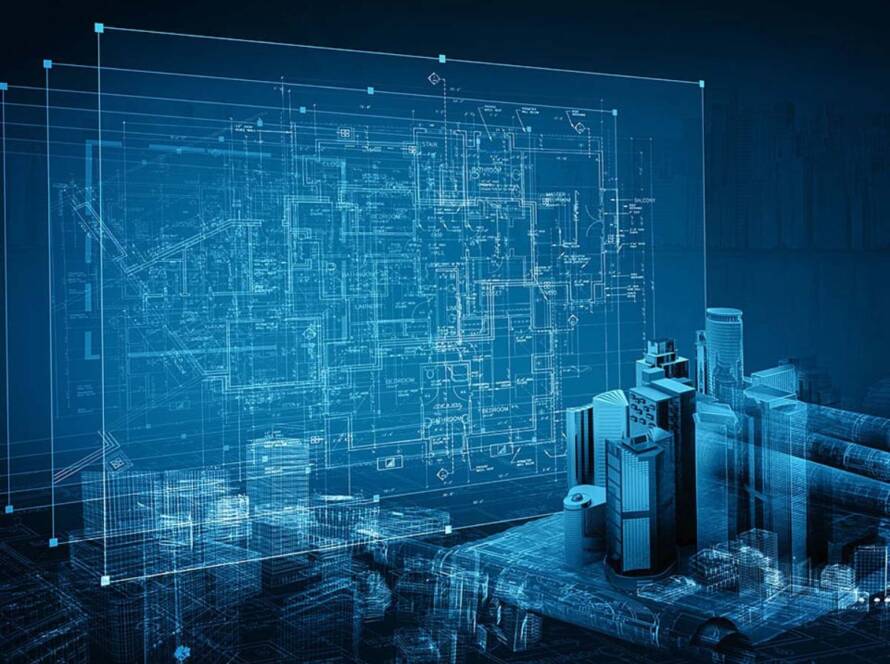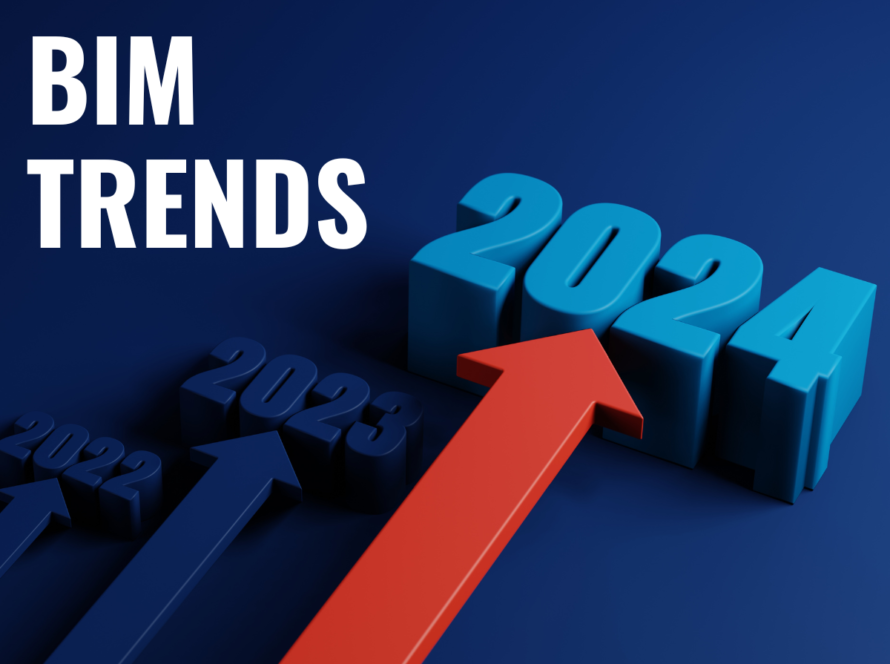Introduction
Do you want to know how BIM enhances collaboration with the AEC projects? If yes, then you need to have a detailed knowledge of BIM AEC to have a clear insight into it. Without knowing the integration between the two aspects, things can become difficult for you.
BIM (Building Information Modeling) acts as a game-changer in AEC projects by fostering seamless collaboration between various stakeholders throughout the project lifecycle, from architects and engineers to contractors and facility managers.
BIM replaces traditional 2D drawings with a centralized 3D model that serves as the single source of truth for all project information. This model stores not just geometry but also rich data like material properties, performance characteristics, and even maintenance schedules.
What Is BIM?
Building Information Modeling (BIM) is an accurate and precise digital representation of the functional and physical characteristics of a building or infrastructure. It involves creating and managing a comprehensive 3D model that integrates information about a project’s design, construction, and operation. BIM serves as a collaborative and information-rich platform that brings together various stakeholders in the Architecture, Engineering, and Construction (AEC) industry to work on a project efficiently.
Why Is BIM Needed In The AEC Industry?
There are several reasons why BIM is required in the AEC industry. You need to be well aware of it if you want to make the engineering process accurate and fast. Some of the key factors to consider here are as follows:-
1. Ensures Improved Collaboration & Co-ordination
BIM provides a collaborative platform, allowing various stakeholders to work together on a shared digital model. Improved communication and coordination among architects, engineers, contractors, and other project participants.
2. Helps In Efficient Design & Planning
BIM enables the creation of a 3D digital model of the project, facilitating a more accurate and comprehensive design process. Designers can visualize the building in 3D, improving decision-making and allowing for better exploration of design alternatives.
3. Clash Detection & Conflict Resolution
BIM tools include clash detection features that identify conflicts and inconsistencies in the design, such as overlapping elements or inadequate clearances. Early detection of clashes reduces the risk of costly errors during construction.
4. Cost Estimation & Budgeting
BIM supports accurate quantity take-offs and cost estimations by linking geometric models with detailed information about materials, labor, and other resources. This helps in better project budgeting and cost control.
5. Time Savings & Estimation Planning
BIM aids in construction planning by providing a detailed digital representation of the project. Construction sequences can be simulated and optimized, leading to more efficient construction processes and reduced project timelines.
Benefits Of BIM In The AEC Industry
There are several benefits of BIM in the AEC Industry that you must know before you adopt it. Some of the key benefits of the BIM in the AEC technology are as follows:-
1. Enhanced Collaboration
BIM provides a collaborative platform, allowing various stakeholders to work together on a shared digital model. Improved communication and coordination among architects, engineers, contractors, and other project participants.
2. Improved Co-ordination & Clash Detection
BIM enables clash detection, identifying conflicts and inconsistencies in the design before construction. Early clash detection helps prevent costly errors and revisions during construction.
3. Efficient Design & Visualization
3D visualization in BIM allows designers to create detailed and accurate representations of the project. Enhanced visualization aids in a better understanding of design intent, leading to improved decision-making.
4. Cost Estimation & Budgeting
BIM supports accurate quantity take-offs and cost estimations, linking geometry with detailed cost information. Better cost control and budgeting throughout the project lifecycle.
5. Construction Planning & Sequencing
BIM aids in construction planning by providing a detailed digital representation of the project. Construction sequences can be simulated and optimized, leading to more efficient construction processes.
Final Take Away
Hence, these are some of the core factors that you need to take care of when you want to make use of BIM technology in the AEC industry. BIM AEC will offer you the opportunity to make the process of construction more lucid and effective.
You can share your comments with us. It will help us to know your take on this matter. Once you follow the correct process, things can become easier for you. Try to make things work in the perfect order.
FAQ( Frequently Asked Questions)
1. Is BIM The Future Of AEC?
BIM fosters better collaboration and communication among different stakeholders involved in a project, leading to increased efficiency and reduced errors. BIM supports the entire lifecycle of a construction project, from conceptualization and design through construction and maintenance. This holistic approach is crucial for sustainable and efficient asset management.
2. Is BIM 360 Degree In The AEC Collection?
Enables multidisciplinary teams to collaborate on shared Revit models in real-time, fostering better coordination during the design phase. Provides a centralized document management system for construction projects. It allows teams to store, manage, and collaborate on project documents and drawings.
3. What Is The Future Of AEC Industry?
Architecture, Engineering, and Construction (AEC) industry involves considering ongoing trends and emerging technologies. While it’s challenging to provide specific predictions.
4. Is Revit Included In AEC?
Yes, Autodesk Revit is a significant component of the Architecture, Engineering, and Construction (AEC) industry. Revit is a Building Information Modeling (BIM) software developed by Autodesk that is widely used by professionals in the AEC field.
5. What Is The Purpose Of Using AEC?
AEC practices aim to facilitate efficient and effective design processes. This involves creating designs that meet functional, aesthetic, and regulatory requirements while optimizing resource utilization.





